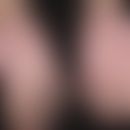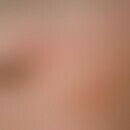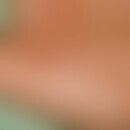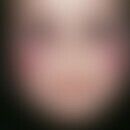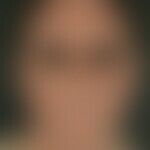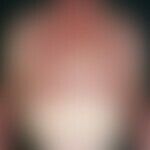Synonym(s)
HistoryThis section has been translated automatically.
DefinitionThis section has been translated automatically.
Chronic dermatitis in light-exposed areas of the skin with extremely low erythema threshold (UVA and UVB), which occurs mainly in older men; this very specific chronic dermatitis is considered a particularly severe subtype of chronic actinic dermatitis.
You might also be interested in
EtiopathogenesisThis section has been translated automatically.
Photosensitivity is the key feature of this chronic photodermatosis, with the spectrum of action including UVB, UVA and visible light above 400 nm.
ClinicThis section has been translated automatically.
There are usually extensive, severely itchy, painful, chronic eczematous skin changes with considerable lichenification and clear infiltration of the skin, which leads to a leathery increase in the consistency of the lesional skin. The skin changes are clearly demarcated from the unexposed skin, whereby this transition is not sharp in a linear fashion, but rather irregularly loosened with "scattered phenomena". Ectropion (clinically very disabling) often occurs with eyelid involvement and requires constant ophthalmologic treatment.
The skin changes persist for months after low UV exposure, can subside in winter and then exacerbate and persist again in spring after brief UV exposure. After a number of years, this rhythm is lost and the eczematous skin changes persist all year round, with an additional worsening of the chronic eczema condition occurring in the light-rich season.
Facies leontina as the maximum manifestation of the actinic reticuloid in the facial area is possible.
Furthermore, in rare cases of severe light sensitization, the eczematous process can also affect the entire integument with the development of erythroderma.
In very rare cases, a transition to malignant lymphoma of the T-cell type has been reported.
Remark: For further illustrations see below. Chronic actinic dermatitis.
HistologyThis section has been translated automatically.
Acanthosis, papillomatosis, band-shaped, dense subepidermal, epitheliotropic lymphohistiocytic infiltrate. Only slight spongiosis. Pautrier microabscesses may occur. A certain nuclear polymorphism of the lymphocytes is detectable, which makes it difficult to differentiate from an initial T-cell lymphoma.
Immunohistochemical analysis of the skin infiltrate confirms the presence of activated T cells, numerous histiocytes, macrophages and B cells (Paek SY et al. 2014).
TherapyThis section has been translated automatically.
- local glucocorticoids
- Light stabilizers
- Light-hardening
- Chloroquine (+ internal prednisolone)
- Azathioprine (+ internal prednisolone)
- Ciclosporin A. (+ internal prednisolone)
General therapyThis section has been translated automatically.
Light protection: Strict avoidance of UV radiation, including visible light if necessary (determination of the action spectrum by means of photoprovocation tests). Consistent textile and physical/chemical light protection (e.g. Anthelios, Eucerin Sun, see also light protection products), tinted lotions and/or make-up if necessary.
Avoid photosensitizing substances (carbamazepine, phenytoin, phenothiazines, hydrochlorothiazide, tetracyclines, quinidine, etc.), see Table 1.
External therapyThis section has been translated automatically.
Radiation therapyThis section has been translated automatically.
Light-hardening: If light protection is not sufficient, a so-called light-hardening with a very cautious UVA dosage such as 0.1 J/cm2 (as a medium UVA dosage) or a PUVA therapy can be initiated.
In the first two weeks of light-hardening with PUVA therapy, a combination with glucocorticoids in a medium dosage(prednisolone: 40-80 mg/day) should be applied; afterwards, a rapid balancing should be carried out. In the course of the treatment, maintenance therapy can be carried out at 4-week intervals. In a long-term study, 20% of patients showed normalized photosensitivity after 10 years (!), 50% after 15 years.
Internal therapyThis section has been translated automatically.
Chloroquine: If light-hardening is unsuccessful, short-term therapy with chloroquine (e.g. Resochin) 250 mg once a day or hydroxychloroquine (e.g. Quensyl) 200 mg twice a day p.o.
Azathioprine/glucocorticoids: If necessary, also try immunosuppressive therapy with azathioprine 100 mg/kg bw/day p.o. in combination with glucocorticoids such as methylprednisolone (e.g. Urbason) 40-80 mg/day p.o. (maintenance dose 4-8 mg/day).
Ciclosporin A/glucocorticoids: trial of an immunosuppressive alternative with Ciclosporin A 1.5 mg/kg bw/day p.o. in combination with glucocorticoids such as methylprednisolone (e.g. Urbason: dosage as before)
Concomitant therapy: betacarotene (e.g. Carotaben Kps.) or nicotinamide (e.g. nicotinic acid amide 200 mg Jenapharm).
TablesThis section has been translated automatically.
Photoallergenic substances
Substance |
Occurrence |
|
External application |
Hexachlorophen |
Disinfectants |
Bithionol |
Disinfectants |
|
Musk |
Fragrance |
|
paraaminobenzoic acid |
Sunscreen (UVB range) |
|
4-isopropyldibenzoylmethane |
Sunscreen products |
|
2-hydroxy-4-methoxybenzophenone |
Sunscreen products |
|
p-Methoxycinnamic acid isoamyl ester |
Sunscreen products |
|
Halogenated salicylanilides |
Soaps, disinfectants |
|
Tetracyclines |
Acne preparations |
|
| ||
Systemic application |
Tetracyclines |
antibiotic |
Tiaprofenic acid |
Antirheumatic agent |
|
Quinidine |
Antiarrhythmics |
|
Promethazine |
Psychotropic drug |
|
Hydrochlorothiazide |
Diuretic |
|
Carbamazepine |
anti-epileptic drug |
|
Phenytoin |
anti-epileptic/antiarrhythmic agent |
|
Sulfonamides |
antibiotic |
|
LiteratureThis section has been translated automatically.
- Angeletti F (2016) Actinic reticuloid. Act Dermatol 42: 482
- Dawe RS et al. (2003) Diagnosis and treatment of chronic actinic dermatitis. Dermatol Ther 16: 45-51
- Gramvussakis S et al. (2000) Chronic actinic dermatitis (photosensitivity dermatitis/actinic reticuloid syndrome): beneficial effect from hydroxyurea. Br J Dermatol 143: 1340
- Ive FA, Magnus IA, Warin RP, Jones EW (1969) "Actinic reticuloid"; a chronic dermatosis associated with severe photosensitivity and the histological resemblance to lymphoma. Br J Dermatol 81: 469-485
Paek SY et al (2014) Chronic actinic dermatitis. Dermatol Clin 32:355-61, viii-ix.
- Zak-Prelich M et al (1999) Actinic reticuloid. Int J Dermatol 38: 335-342
Incoming links (9)
Actinic erythroderma; Actinic reticuloid; Actinoreticulosis; Facies leontina; Hydrocortisone cream hydrophilic 0.25/0.5 or 1% (nrf 11.36.); Light-hardening; Olaquindox; Persistent light reaction; Reticuloid actinic;Outgoing links (18)
Chloroquine; Chronic actinic dermatitis (overview); Ciclosporin a; Erythrodermia; Facies leontina; Glucocorticosteroids; Glucocorticosteroids systemic; Hydrocortisone cream hydrophilic 0.25/0.5 or 1% (nrf 11.36.); Hydroxychloroquine; Lichenification; ... Show allDisclaimer
Please ask your physician for a reliable diagnosis. This website is only meant as a reference.
